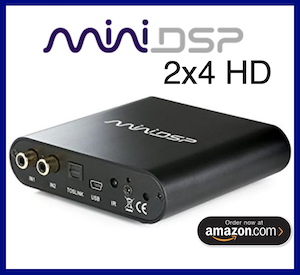John Mulcahy
REW Author
Thread Starter
- Joined
- Apr 3, 2017
- Posts
- 8,441
There are a few changes around input/output handling in V5.19 beta 9.
Input and input channel selectors have been added to the Measure dialog, making it easier to switch input channels - handy if you are using a miniDSP EARS rig to measure each channel of a headphone, for example. The currently selected input is also displayed in the title of the SPL meter and SPL logger windows.
Support has also been added for interfaces that have multiple inputs and outputs. This is mainly for OS X (though may also work on Linux) as Java on Windows only supports stereo channels (use ASIO for multichannel on Windows). The support includes a channel mapping tool, to assign up to 8 of the available channels to be used during measurement, labelling them with typical surround channel labels, a channel number from 1 to 8, or the hardware channel number. On the input side the channels are just numbered in the order they appear to Java.
Some protection mechanisms have been added to try and avoid damage if levels are inadvertently set too high. Measurement is aborted if excessive input clipping occurs or, if selected, if the SPL exceeds a configurable threshold. These can be turned on or off on the measurement dialog.
The signal generator WAV export has acquired a couple of new options, a selector for the channels the signal should appear on (left, right, both) and a sample rate selection.
There have been some improvements to the Thiele-Small parameter optimisation to improve fitting to the impedance measurement. As part of that data above 10 kHz is no longer used for fitting as it seems it is not always reliable.
Saving RTA data now offers a choice of creating measurements from either the current values, the peak values or both (which will create two measurements)
I have also updated the Java runtime in the versions which include a JRE, now 8u162, and have added some equipment info to the welcome page shown on startup.
A few bugs have been fixed:
Input and input channel selectors have been added to the Measure dialog, making it easier to switch input channels - handy if you are using a miniDSP EARS rig to measure each channel of a headphone, for example. The currently selected input is also displayed in the title of the SPL meter and SPL logger windows.
Support has also been added for interfaces that have multiple inputs and outputs. This is mainly for OS X (though may also work on Linux) as Java on Windows only supports stereo channels (use ASIO for multichannel on Windows). The support includes a channel mapping tool, to assign up to 8 of the available channels to be used during measurement, labelling them with typical surround channel labels, a channel number from 1 to 8, or the hardware channel number. On the input side the channels are just numbered in the order they appear to Java.
Some protection mechanisms have been added to try and avoid damage if levels are inadvertently set too high. Measurement is aborted if excessive input clipping occurs or, if selected, if the SPL exceeds a configurable threshold. These can be turned on or off on the measurement dialog.
The signal generator WAV export has acquired a couple of new options, a selector for the channels the signal should appear on (left, right, both) and a sample rate selection.
There have been some improvements to the Thiele-Small parameter optimisation to improve fitting to the impedance measurement. As part of that data above 10 kHz is no longer used for fitting as it seems it is not always reliable.
Saving RTA data now offers a choice of creating measurements from either the current values, the peak values or both (which will create two measurements)
I have also updated the Java runtime in the versions which include a JRE, now 8u162, and have added some equipment info to the welcome page shown on startup.
A few bugs have been fixed:
- Bug fix: the previous sample rate was not restored on startup if it was set higher than 48k
- Bug fix: the RT60 and Clarity traces could re-select themselves when changing measurement if they had been unselected
- Bug fix: The spectrogram did not automatically recalculate if the before peak span was changed
- Bug fix: Harmonic distortion traces normalised to fundamental were shifted if the measurement had an SPL offset applied which had not been added to the data
- Bug fix: Incorrect cal data values could occur if a cal file was in csv format
- Bug fix: The input name in the SPL Meter title was not updating when input selection changed
- Bug fix: The distortion noise floor was not lowered when using multiple sweeps to reflect the theoretical improvement obtained (3 dB for each doubling of number of sweeps)
- Bug fix: ASIO input data could time out sometimes after changing the ASIO output












